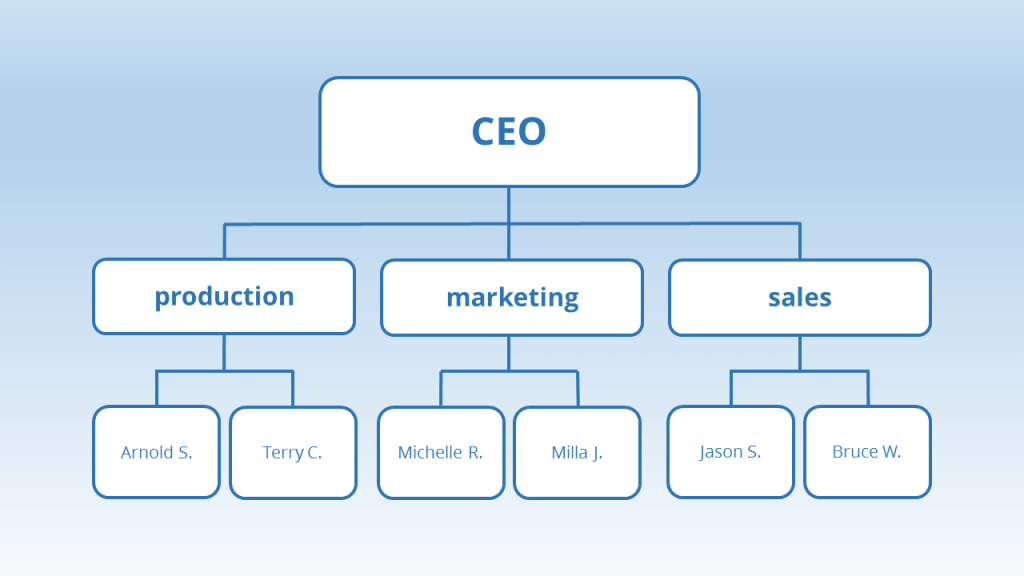A Job Description is an organized factual statement of job content in the form of duties and responsibilities of a specific job. A job description is a list of general tasks, or functions and responsibilities of a position. It describes the tasks and responsibilities that make up the job.
An effective job description lets employees know what is expected of them and that if people are going to perform their assigned tasks, then they obviously have to know what the task is, how to do it, and how to measure the results.
Productivity Measurement Tool
Used appropriately, job descriptions are a productivity measurement tool and can help organizations, especially in the early stages of a worker’s employment. Further, job descriptions are potentially one of the most powerful tools available to help managers to improve employee performance and productivity.
Job descriptions are a critical tool that relates to management of employee performance through planning, developing, monitoring, evaluating, and rewarding employees for their contribution. They are practical tools designed to enable trained and experienced staff to execute their duties in a planned manner aimed at achieving the goals and objectives of an organization.
Job descriptions have great utility for every phase of human resource administration starting from designing jobs and reward systems, through staffing and training to performance evaluation and control, job descriptions are literally indispensable if the human resource is to be managed properly.
One major advantage associated with formal job descriptions is that, it provides business owners and supervisors with a useful tool of performance measurement. In addition, productivity means producing and getting the work done with the most advantageous results using the best possible methods. Also doing work and getting results is a measurement of what we do, while the methods used to carry out work is a measurement of how we conduct ourselves and our work transactions.
Each job is represented by what is within the defined scope of the position (Job Description) in relation to others, and how each job function is carried out. In addition, a comprehensive and adequate job description is the most important determinant of performance.Organizations have become more concerned about and responsive to the needs of the work force, because they have learned that employee job dissatisfaction can be linked to outcomes such as increased rates of absenteeism and turnover thus affecting their performance in the organization as a whole.
Communicating Employee’s Role
Effectively managing staff and communicating each employee’s role are perhaps two of the most difficult tasks human resources managers face. Many managers are well-intentioned professionals who advanced into management based on their own job performance. Unless managers are able to receive proper training or coaching, they lack many of the skills required to skilfully manage employees and positively influence performance and productivity. Many companies lack the tools necessary to adequately address an employee’s work performance because job descriptions are either out-dated or may not exist at all.
Job descriptions have become one of the most important tools in an organization as a benchmark to employee’s performance. This is because when an organization thinks on how it wants to perform effectively, it must also think about the various tasks that are assigned to its employees. Organizations that does not plan for their Human Resources may find that they are not meeting either their Human Resource requirements or their overall goals effectively. In addition,planning for Human Resources is a challenging task today given the increasing competitive business environment.
A Human Resource Management Department can have a significant effect on an organization in a number of ways depending on what goals a company chooses to focus on. In addition, in order to meet satisfactory or exceed performance goals, employee should have the following: expectations to achieve the goals and the guidelines by which to achieve them; Knowledge and skills; feedback from management that effectively communicates the status of the persons performance based on measurable guidelines; tools and acceptable working conditions such as enough time and equipment to perform the job effectively and proper incentives that positively reinforce good performance.
Theories
Goal-setting theory states that human resource managers will not act to maximize employee work performance unless proper tools and systems are put in place and implemented to safeguard the interest of the organization. A job must be clearly defined, challenging and there must be feedback to give employees the drive to perform.
Expectancy theory states that, for individuals to be motivated to perform, they must feel that they are able to change their behaviour and that change in behaviour will produce a reward to justify the change in behaviour. Increased efforts will lead to increased performance.
Equity theory holds that people are not only interested in rewards but also in the comparative nature of the rewards. Success in achieving goals and rewards contributes to organizations productivity which will act as a positive incentive and reinforce successful behaviour.Employees seek to maintain equity between their in-puts and the outcomes that they receive from a job and expects a fair return from what they contribute to their jobs in relation to pay, previous experience, education and efforts on the job.
The role of job descriptions
A Job description is used by management in employee recruitment, selection and placement.Managers use information from job description to get the right workers for each job. A job description helps during orientation and induction of new employees. They help to clarify what a new employee need to know about his/her assignments. A job description is useful during performance appraisal and is an important tool for promotion development of employees on specific skills required for a specific job.

Understanding the levels and the impact of job descriptions on employee performance is an increased concern for many organizations. Supports these views and observes that this is important not only because of the increased interest in managing human resources but also because of rising personnel costs in comparison to their performance rating.
Winning organizations get their competitive edge from leadership structure that helps them hire talented people, place them in the right positions and provides clear job descriptions that aligns their individual performance with the organization’s vision and strategic objectives, develops their abilities and rewards performance commensurate with their contributions to the organization’s success.
Organizational Culture
Culture creates a unified atmosphere that allows each and every employee to have a better sense of their roles within an organization. The 21st Century has two strong imperatives for Human Resource Managers which are: attracting and retaining highly dedicated and competent employees. They further argue that high-involvement work systems have been designed to represent a holistic work design that includes interrelated core features such as involvement, empowerment, development, trust, openness, teamwork and performance-based rewards.
READ ALSO >> Strategic Decision Making – a Guide For Smart Managers
In addition, there are two factors that have been linked to higher productivity; quality of employees and customer satisfaction, and market and financial performance. Very few prior studies have looked at the impacts of this holistic design in relation to effective utilization of a job description.
The level of detail utilized in the creation of job descriptions and the monitoring of employee’s execution of the duties articulated can vary from one organization to another. A multinational corporation may have job descriptions that are far more formal and detailed in content than those used by a small local business. Companies in different industries tend to approach the issue of job descriptions differently as well. In addition, some business owners and management teams simply institute and nourish different company cultures that may have different conceptions of job descriptions and their utility
Further research has shown that companies that operate in a flexible working environment in which employee roles are fluid and expectations change may find the quest to define various job parameters to be a daunting one the essence of the problem is how clear the directives are, where these are needed can be reconciled with flexible work systems
On the whole, larger organizations will often out of either real or imagined necessity, institute more formalized job descriptions /monitoring procedures. Still, in many organizations with detailed plans, job descriptions are usually thought of as something for the lower level people in the organization Higher-ups have mission statements which sound good but are hard to measure. Incidentally then, there are people doing things which may or not have been agreed to do.
Job descriptions can help business enterprises maintain their focus at all job levels including top management and ownership positions. Owners of family establishments or very small business enterprises meanwhile may simply decide that formal job descriptions are unnecessary. Ultimately each small business owner needs to consider the unique aspects of his or her own business situation when deciding how to define and monitor the responsibilities of each work position.
Performance Appraisal
One major advantage associated with the formal job description is that it provides business owners and supervisors with a useful tool of performance measurement. Fundamentally, productivity means producing or getting the work done with the most advantageous results using the best possible methods.
Doing work and getting results is a measurement of what we do, while the methods used to carry out work is a measurement of how we conduct ourselves and our work transactions. Therefore, each job is represented by what is within the defined scope of the position (job description) in relation to others we work with and how each job function is carried out.
SEE ALSO >> Employees Key to Success of 21st Century Organisations
A good communication of performance criteria constitutes at the minimum giving employees copies of their job description and appraisal form, then explaining what kinds of job functions are evaluated against performance dimensions and standards. In addition, job descriptions are often used to provide potential job applicants with a sense of the various obligations and rewards of that position, to help business develop salary grades, and to help maintain a recognizable organizational structure.
But while the benefits that accrue to business that take the time and efforts to devise and update job descriptions are numerous, there are potential legal difficulties which can simply turn to haunt the organization on issues of overtime, performance reviews, and termination.The fundamental problem is that the job descriptions merely considered as guidelines about work tasks and expectations may be seen as much more definitive by attorneys and the courts.
By knowing all the duties a job entails and as well as having product/sales goals, an organization can make a well-informed choice as to how many employees will be needed in a particular department.
Principally, annual reviews could be annual or semi-annual and are routinely seen as normal fixtures in most establishments useful to both employee and employer for many reasons. But employers should know that they can run into trouble if they give apoor mark for their work on tasks that are not delineated in their official job descriptions. An employer is at a legal risk to hold an employee responsible for work that has not been defined in writing.
Small business owners that decide to terminate an employee for poor performance have to make sure that they are doing so because of their dissatisfaction with the targeted employees work on tasks that are in the job descriptions lest they walk into legal difficulties associated with wrongful dismissals.
Performance Management
When a job is analysed, each step in the task at hand is evaluated, where there is evidence of deficiency improvement can then be made to either speed production, increase customer support, find better ways to complete a task. By analysing a job, an accurate job description can be created and can be streamlined to attract the right applicant.
By knowing all the duties a job entails and as well as having product/sales goals, an organization can make a well-informed choice as to how many employees will be needed in a particular department, for how long and the possible type of the organizational structure. Job descriptions can be a valuable business resource when used correctly. But many organizations do not take full advantage of these documents, either because they are unaware of their possibilities or because of companywide perception that they are of limited use
Limiting Factors
There are several factors that limit the effectiveness of job descriptions. These include: Managers unfamiliar with purpose and usage of job descriptions; vague, inaccurate, outdated or incomplete job descriptions and managers not motivated to utilize job descriptions.Further managers who want to assess the productivity of their employees must take into account individual motivational needs and how best job descriptions can be designed to meet their needs. It is imperative to sustain success in organizations by improving the performance of the people who work in them by developing the capabilities of teams and individuals.
One major advantage associated with formal job description is that it provides business owners and supervisors with a useful tool for performance measurement. Productivity means producing and getting the work done with the most advantageous results using the best possible methods. Doing work and getting results is a measurement of what we do, while the methods used to carry out work is a measurement of how we conduct ourselves and our work transactions.
Next Steps
Human resource management departments in organizations are charged with the responsibilities of developing Job Descriptions. Clearly written Job descriptions play a vital role in selection, recruitment and induction, performance management, appraisal and job evaluation. Advertisements for jobs should have a clear statement of the jobs to be performed, including the skills and knowledge that one must possess to fill up positions. Until recently, Job Descriptions were only developed for Senior Managers, unlike today where they cover every cadre of employees. However, among the challenges facing Job Descriptions is lack of appropriate organizational structures that inhibit recruitment of the right candidates because of tailor-made Job Descriptions that are made to suit certain individuals.
Describing productivity as the overall output of goods or services produced divided by the inputs needed to produce that input. High productivity can lead to economic growth and development which calls for effective job description to achieve the best results.













Leave a comment